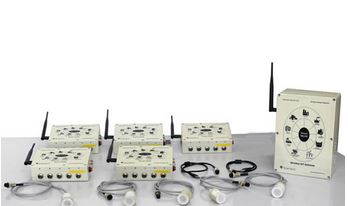Scientech-2311W V2.0 Understanding Wireless Sensor
Wireless Sensor Network (WSN) research has enabled large scale monitoring using small Sensors with radio links. The technological advance in wireless communications and microelectronics has enabled the development of small, low-cost Sensor Nodes. Wireless Sensor Networks are developed to organize and control these Sensor Nodes, which have sensing, data processing, communication and control capabilities. Information collected from these Sensor Nodes is routed to a sink Node via wireless communication approach. The research in the Wireless Sensor Network has focused primarily on the networks issues such as routing, data dissemination and aggregation of co-related data for downstream data delivery. The combination of small size, low cost and wireless networking functionality makes Wireless Sensor Network (WSN) technology exceptionally scalable.

- Wireless Network using ZigBee protocol.
- Easy to configure.r
- ISM band 2.4 GHz operation
- Data collection from End Device & rely to coordinator
- using Router.
- Six analog input and 4 digital input/ output connector on each Node.
- Status indicators like Data Transmission battery charging.
- Possible network combinations - point to point, star, mesh
- Battery charging via USB cable
- Node configuration connector.
- Easy to install.
- Reconfigurable
- Protocol design
- Reprogrammable)
- Understand the concept of Wireless Sensor Networ
- Learn different network topologies like Point to Point, Star and Mesh
- Study Sensors and their circuit diagram.
- Interface analog / digital signaling of Sensors.
- Learn Graphical analysis of analog / digital Sensors
- Routing algorithm
- Learn to configure End Device and Router
- Interfacing using Arduino, Python, and C programing etc
